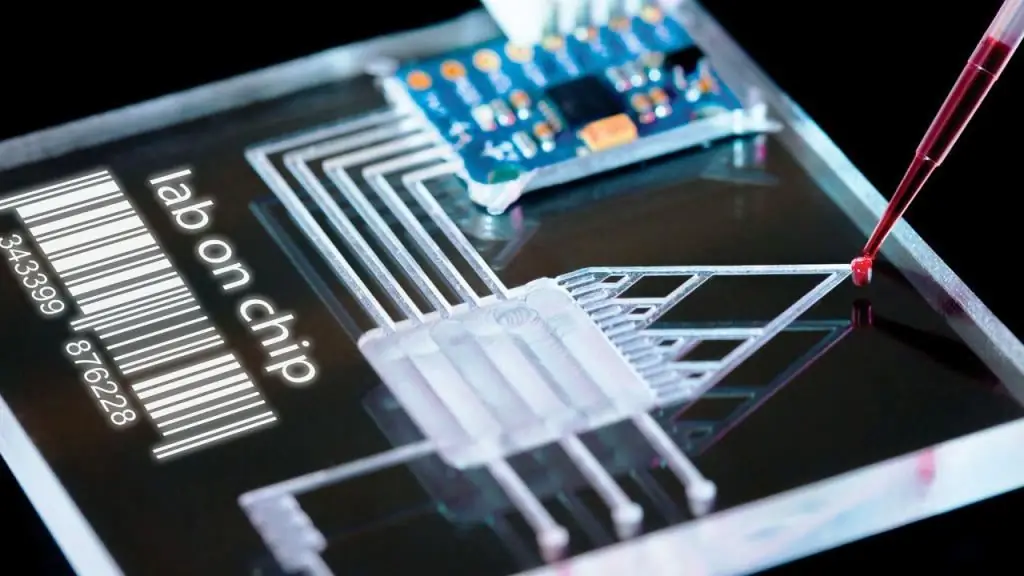In most countries of the world, video cameras have long become commonplace. People take them to school plays, sporting events, family reunions, and even births. In a place popular with tourists, they can be seen everywhere. Camcorders have gained a strong foothold in the US, Japan and many other countries as they represent a highly sought-after technology.
But how can such a small device do so much? For those born before the 1980s, it is surprising that quality models are now readily available and that they are so easy to use. This article describes the principle of operation and the device of the video camera.
Basic design
A conventional analog video camera consists of two main parts:
- Section including CCD, lens and zoom, focus and iris control motors;
- a downsized VCR.
How the video camera worksis that it receives visual information and turns it into an electronic signal. A VCR is similar to a regular TV-connected recorder: it receives a signal and records it on a cassette.
The third component, the viewfinder, also receives the video image, so the user can see what is being filmed. This is a small black and white or color display, but many modern models are equipped with large full color LCD screens. There are many formats of analog camcorders with many additional features, but the design described is the main one. They differ in what cassettes they use.
The device and principle of operation of digital video cameras are similar to analog ones, but they have an additional element that converts information into data bytes. Instead of recording the video signal as a continuous sequence of magnetic pulses, it is stored as zeros and ones. Digital camcorders are popular because they make it easy to copy videos without losing any information. Analog recording "disappears" with each copy - the original signal is not reproduced accurately. Video information in digital form can be downloaded to a computer, where it can be edited, copied, emailed, etc.
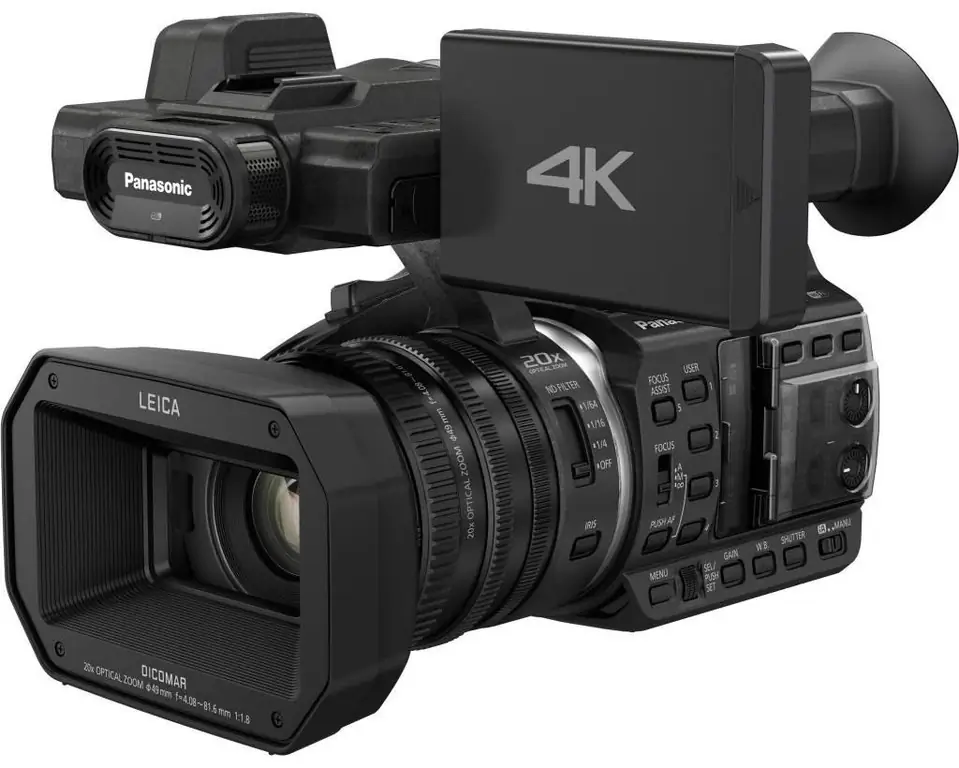
Image sensor
Like a camera, a camcorder "sees" the world through a lens. Optics are needed to focus the light from the stage onto the film treated with photosensitive chemicals. Thus, the camera captures what isin front of him. It collects more light from the bright parts of the scene and less from the dark ones. The lens of a video camera also serves to focus, but instead of film, it uses a small semiconductor image sensor. This sensor detects light using an array of millions of tiny photodiodes. Each of them measures the number of photons that hit a certain point and translates this information into electrons (electrical charges): a brighter image is represented by a higher charge, and a darker image by a lower one. Just as an artist paints a scene by highlighting dark areas with light areas, a sensor creates video by detecting light intensity. During playback, this information controls the brightness of the display pixels.
Of course, measuring the luminous flux only gives a black and white image. To get color, you need to determine not only the overall level of illumination, but also the levels for each color. The full spectrum can be recreated by combining just 3 of them - red, green and blue. Therefore, the principle of operation of video cameras is based on the use of only these colors.
Some models split the signal into 3 versions of the same image for red, green and blue light levels. Each of them is captured by its own chip. They are then added together and the primary colors are mixed to create a full color image.
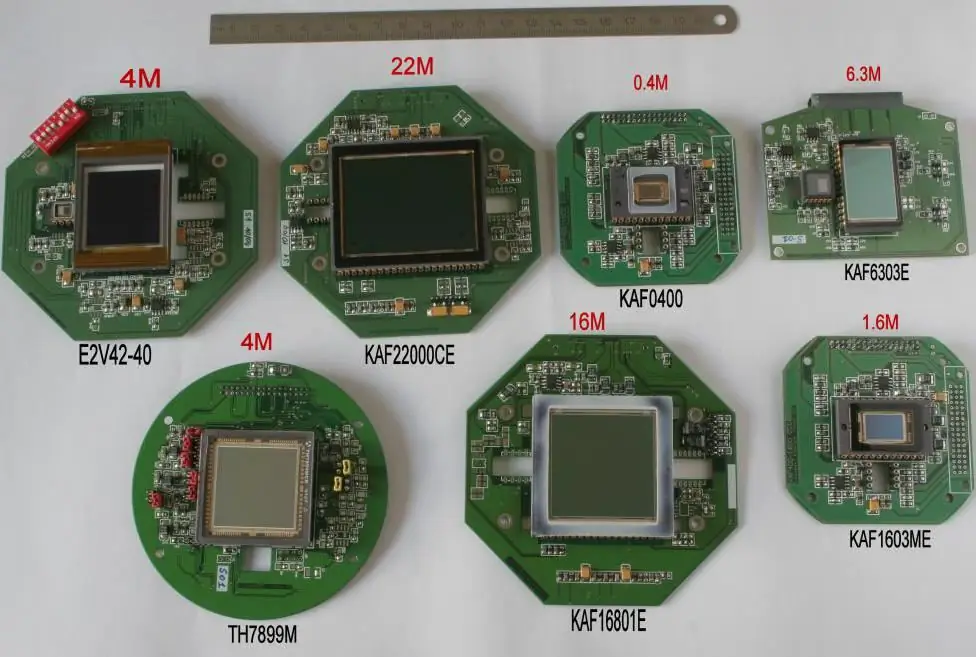
This simple method produces rich, high-resolution video.
Photodiode CCDs are expensive and consume a lot of power, and use3 sensors greatly increases production costs. Most video cameras are equipped with only one sensor with permanent color filters for individual photodiodes. Some of them only measure red levels, some only green levels, and the rest measure blue levels. The colors are distributed in a grid pattern (such as a Bayer filter) so that the camcorder's processor can get an idea of the color levels in all parts of the screen. This method requires interpolation of the data received by each photodiode by analyzing the information received by its neighbors.
Signal Shaping
Because camcorders capture moving images, their sensors have additional pieces that are not found in digital camera sensors. To create a video signal, they must take many shots every second, which are then combined, giving the impression of movement.
To do this, the camcorder captures a frame and records it interlaced. Behind the image sensor is another sensor layer. For each field, video charges are transferred to it and then sequentially transmitted. In an analog video camera, this signal is sent to a VCR, which records it (along with color information) on videotape in the form of magnetic pulses. While the second layer is transmitting data, the first one is capturing the next image.
The principle of operation of a digital type video camera is basically the same, except that in the last step, the analog-to-digital converter converts the signal into data bytes. The camera records them on media, which can be magnetic tape, harddisc, DVD or flash memory. Interlaced digital models store each frame as two fields in the same way as analog models. Progressive-scan cameras record video frame-by-frame.
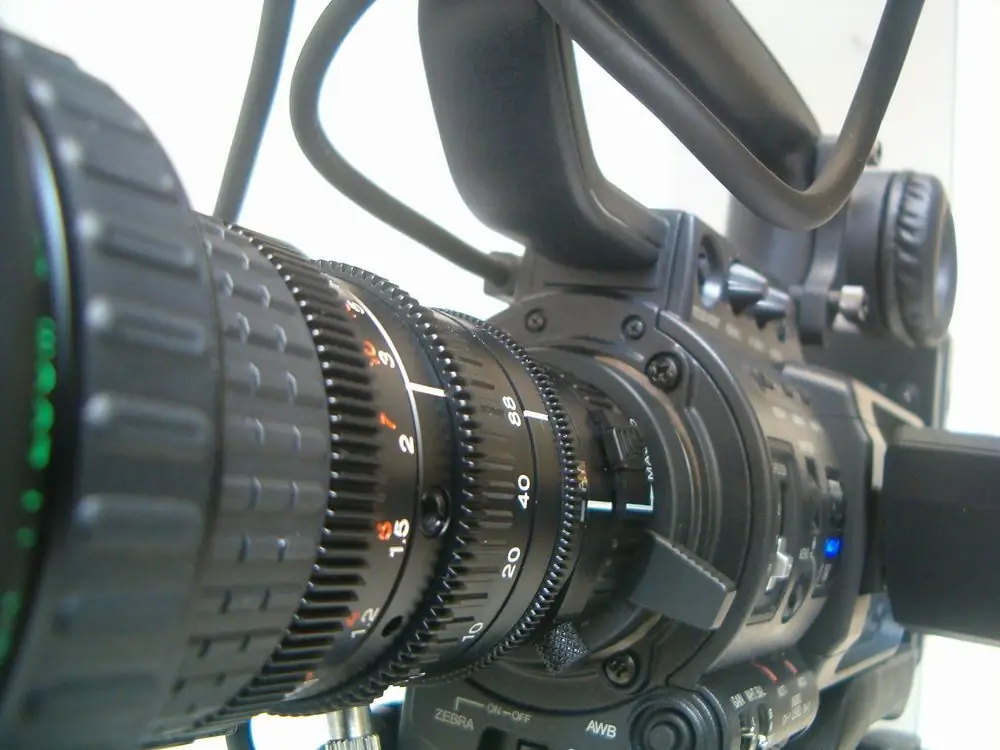
Lens
As mentioned earlier, the first step in recording a video image is to focus the light on the sensor. The principle of operation of the camera lens is as follows. In order for the camera to capture a clear picture of the object in front of it, it is necessary to focus the optics, that is, move it so that the rays emanating from the subject hit exactly on the sensor. Like cameras, camcorders allow you to move the lens to focus light.
Autofocus
Most people need to move and shoot different subjects at different distances, and constantly refocusing is extremely difficult. That's why all camcorders have an auto focus device. This is usually an infrared beam that bounces off objects in the center of the frame and returns to the camera sensor.
To determine the distance to the object, the processor calculates how long it takes for the beam to reflect and return, multiply this value by the speed of light and divide the product by two (because it traveled the distance twice - to the object and back). The camcorder has a small motor that moves the optics to focus them to a calculated distance. This usually works quite well, but sometimes you have to redefine the distance - for example, when you want to focus on something not in the center of the frame,because autofocus responds to what is directly in front of the lens.
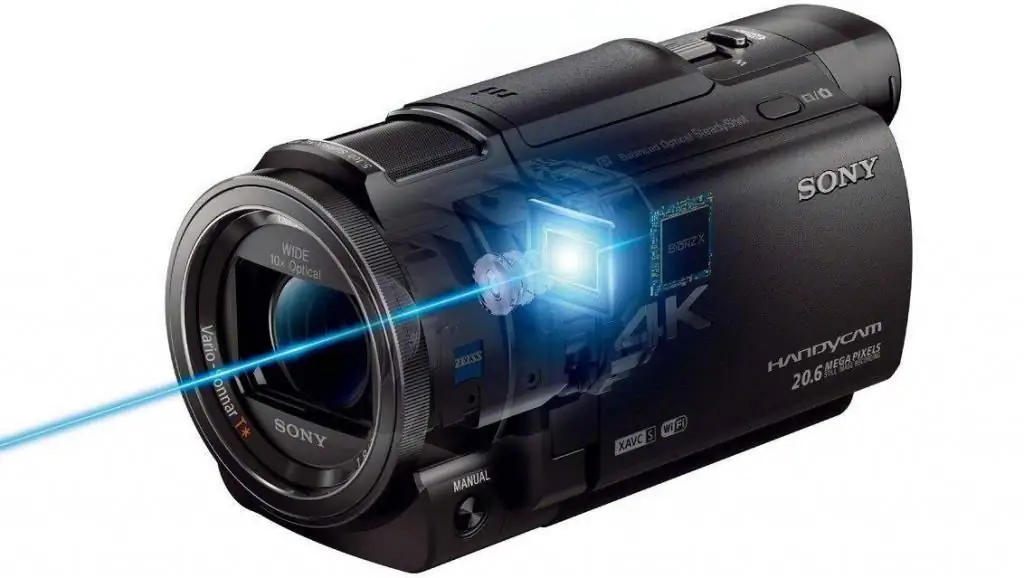
Optical and digital zoom
Camcorders are also equipped with a zoom lens. This allows you to zoom in on the scene by increasing the focal length (between the optics and the film or sensor). The optical zoom lens is a single unit that allows you to move from one magnification to another. The zoom range indicates the maximum and minimum magnification. To make zoom easier to use, most camcorders are equipped with a motor that moves the optics in response to pressing a button on the handle. One of the advantages of this is that you can easily control the magnification without using a second hand. In addition, the motor moves the lens at a constant speed, and the zoom is smoother. However, the engine drains the battery.
Some camcorders have a so-called. digital zoom. Users do not advise using it, since it is not associated with the lens at all, but simply enlarges the part of the picture captured by the sensor. This sacrifices resolution as only part of the sensor area is used. As a result, the video is less clear.
Exposure
One of the great features of the camera is the automatic adjustment to different light levels. The sensor is very sensitive to over or under exposure because the range of signals from each photodiode is limited. The camcorder monitors their level and adjusts the aperture to reduce orincreasing the flow of light through the lenses. The processor maintains good contrast at all times so that images do not look too dark or washed out.
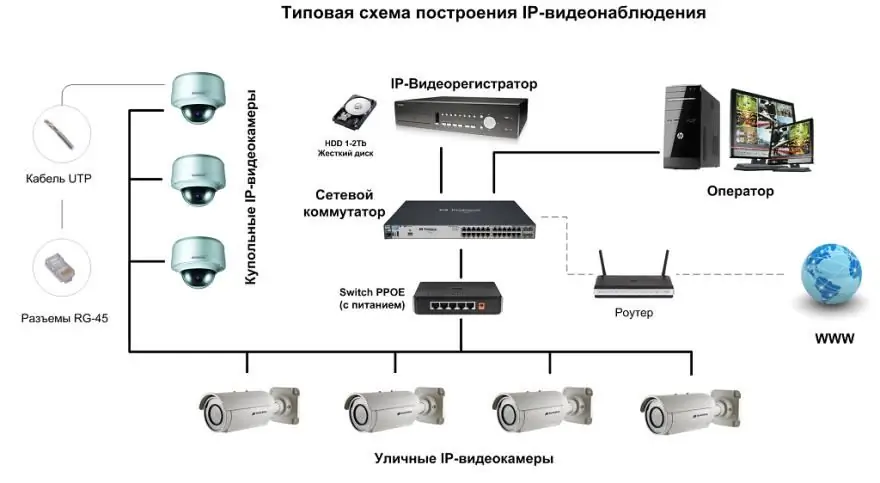
The principle of operation of surveillance cameras
Such cameras will be useful for those who want to know what is happening during their absence. The need for them may arise for various reasons. For example, parents may want to watch a sleeping baby and reduce the risk of a dangerous fall out of the crib. And cameras around the house will let you see people coming to the front door and maybe even help you find the burglar.
The camera's output is transmitted, processed, converted back to an image, and recorded if necessary. Video can be transmitted over a coaxial cable or twisted pair, as well as over a wireless network. Signal processing is carried out in a video recorder, server or PC with a video capture card. The image is displayed on the monitor.
The principle of operation of outdoor surveillance cameras is that they are installed on gates, buildings, and other structures in order to monitor what is happening in real time. As a rule, these are large, conspicuous devices, the very sight of which makes it clear to outsiders that they are under surveillance.
The principle of operation of wireless video cameras is based on broadcasting images over a wireless network. However, other devices such as Wi-Fi routers and mobile phones are capable of interrupting their signal. In addition, the wireless transmission may be intercepted, whichcontrary to security objectives. Therefore, users are advised to ensure that the signal is securely encrypted.
The principle of operation of hidden cameras is based on the use of point-type lenses with an exit hole of several millimeters and a wide viewing angle. This allows you to install them in household appliances and interior items.
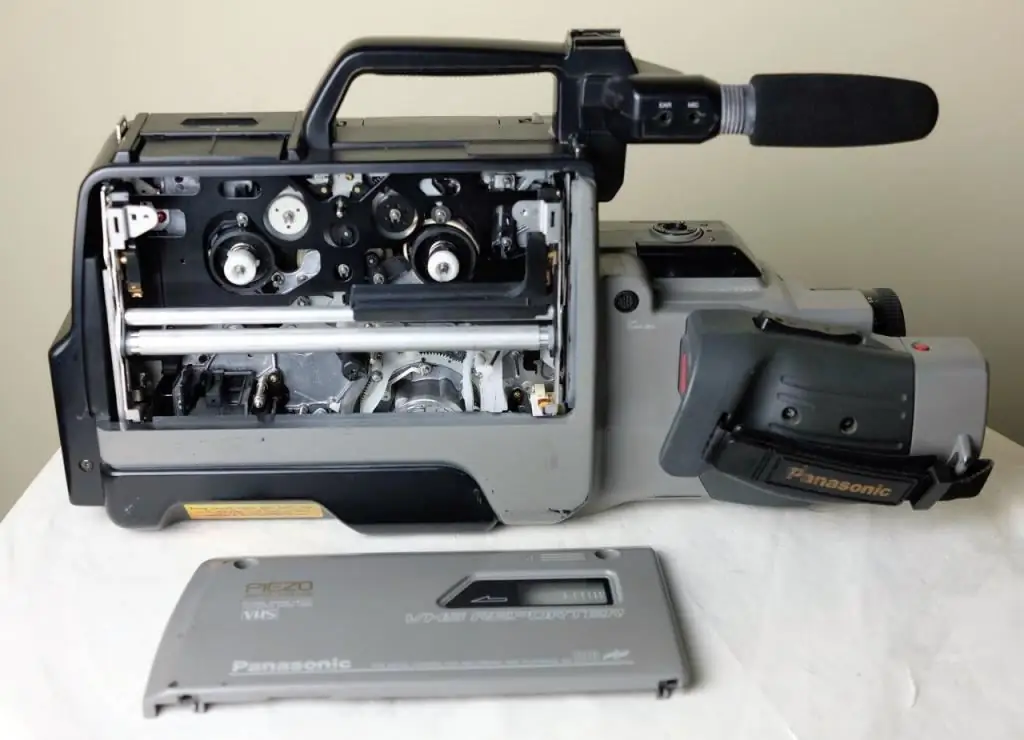
Tips for choosing analog formats
Analogue cameras record video and audio as an analog tape track. Experts do not recommend using them, because when copying, the quality of the image and sound inevitably decreases. In addition, analog formats lack a number of digital video camera features. The main difference between the two is the cassette type and resolution. The main formats of analog camcorders are:
- VHS standard. This type of camera uses the same magnetic tape as conventional VCRs. This makes it easier to view the footage. These cassettes are inexpensive and provide long recording times. The main disadvantage of the VHS format is the need for a bulky camcorder design. The resolution is 230-250 horizontal lines, which is the lower limit for this type of device.
- VHS-C cameras use standard VHS tape but in a smaller cassette. The recording can be played back on a regular VCR, but requires a full size adapter. In principle, the operation of a VHS-C camcorder is similar to VHS. The smaller cassette size allowscreate more compact structures, but the recording time is reduced to 30-45 minutes.
- Super VHS cameras are about the same size as VHS because they use the same format cartridges. The difference is that the write resolution is 380-400 lines. These tapes cannot be played on a VCR, but the camera itself can be connected directly to a TV.
- Super VHS-C conforms to the VHS standard but is a more compact version using a smaller cartridge.
- 8mm camcorders also feature small cassettes. This allows more compact models to be produced, providing resolutions that match the VHS standard, with slightly better sound quality. Recording duration - about 2 hours.
- Hi-8 standard is similar to 8mm but provides much higher resolution, around 400 lines.
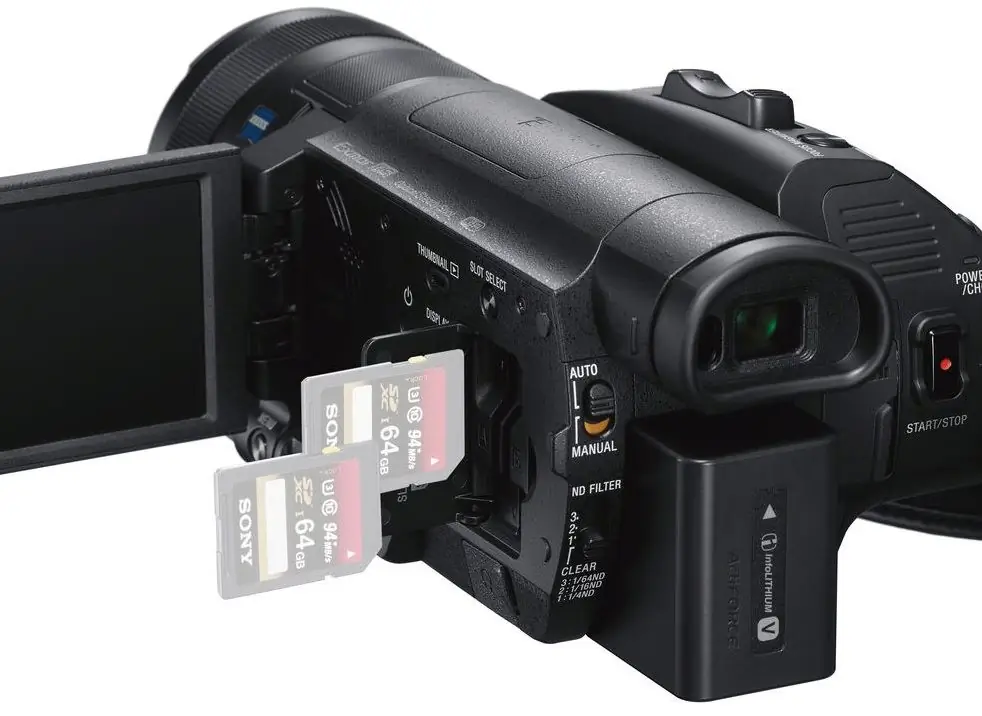
Tips for choosing digital formats
The principle of operation of digital video cameras differs from analog ones in that the information in them is recorded in digital form, so that the image is reproduced without loss of quality. Such a video can be downloaded to a computer, where it can be edited or published on the Internet. It has much better resolution. The following formats are widely used:
- MiniDV features compact cassettes that hold 60-90 minutes of footage at 500 lines. This type of camera is extremely light and compact. Capturing still images is possible.
- Sony MicroMV Formatworks the same but uses smaller cassettes.
- Digital8 uses standard Hi-8mm tape for 60 minutes of recording. Models of this type are usually slightly larger than DV.
- DVD cameras save video directly to small optical discs. The main advantage of this format is that each session is recorded as a separate track. Instead of rewinding and fast rewinding, you can jump directly to the desired part of the video. Other than that, DVD camcorders are pretty close to MiniDV models, but can store more video from 30 minutes to 2 hours.
- DVD-R and DVD-RAM are 3/4 the size of DVD discs. The downside is that you can only write to them once. They cannot be played on conventional DVD players. Like MiniDV cassettes, you either need to use the camera as a player or copy the movie to another format.
- Memory card is the most popular way to record video. Clips are saved directly to solid-state cards such as flash memory, Memory Stick, or SD.
In conclusion
Today, everyone can buy an inexpensive camera, and editing programs simplify the editing process to such an extent that everyone can quickly master it.
Even low quality analog models have many useful features that are easy to learn and make quality movies. Technology that was once the exclusive domain of professional television is now available to amateurs. The latest camcorders certainly have a lot to offer and for those who want to capture a birthday orconcert, and the start-ups of ambitious video projects.






